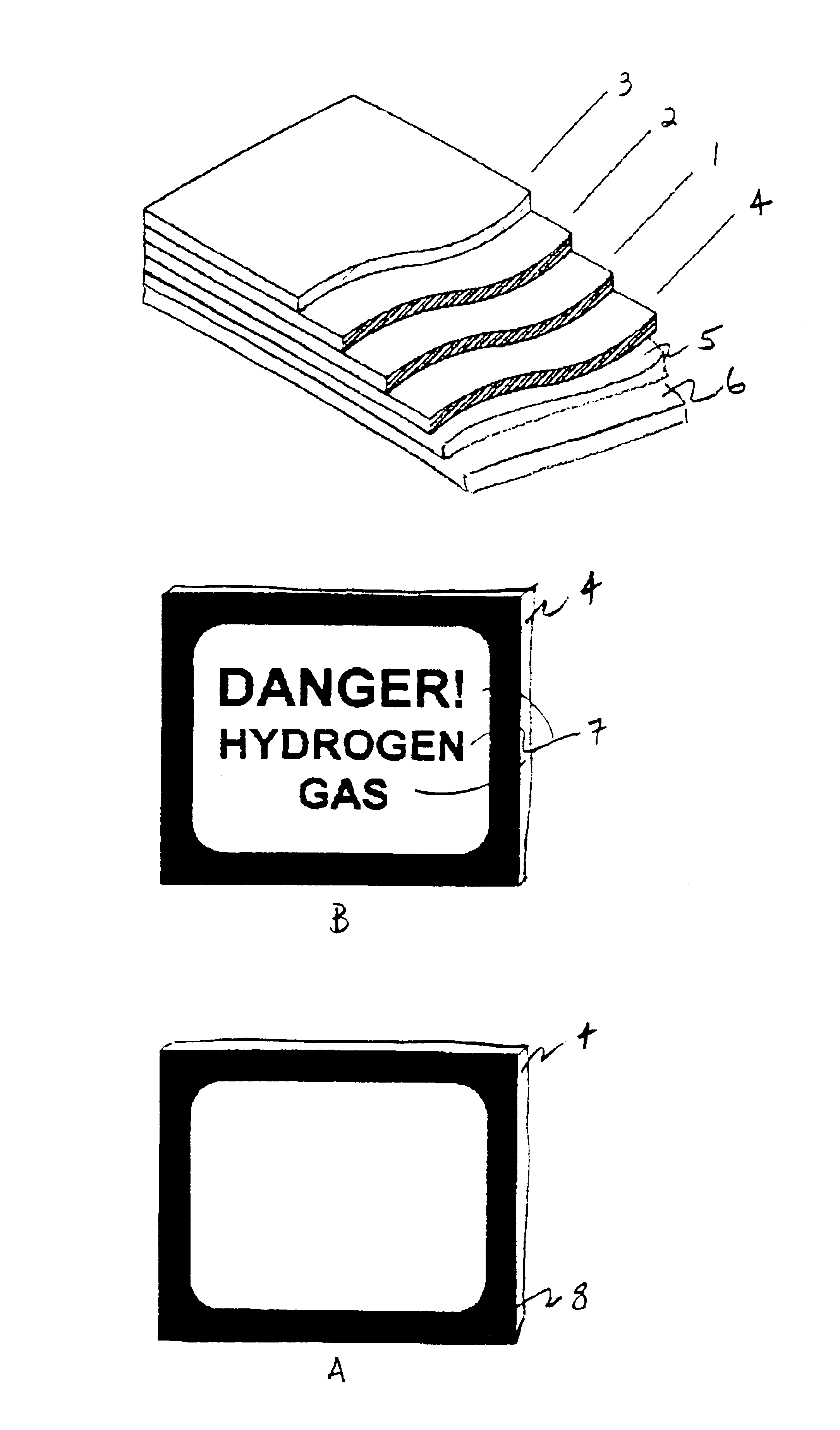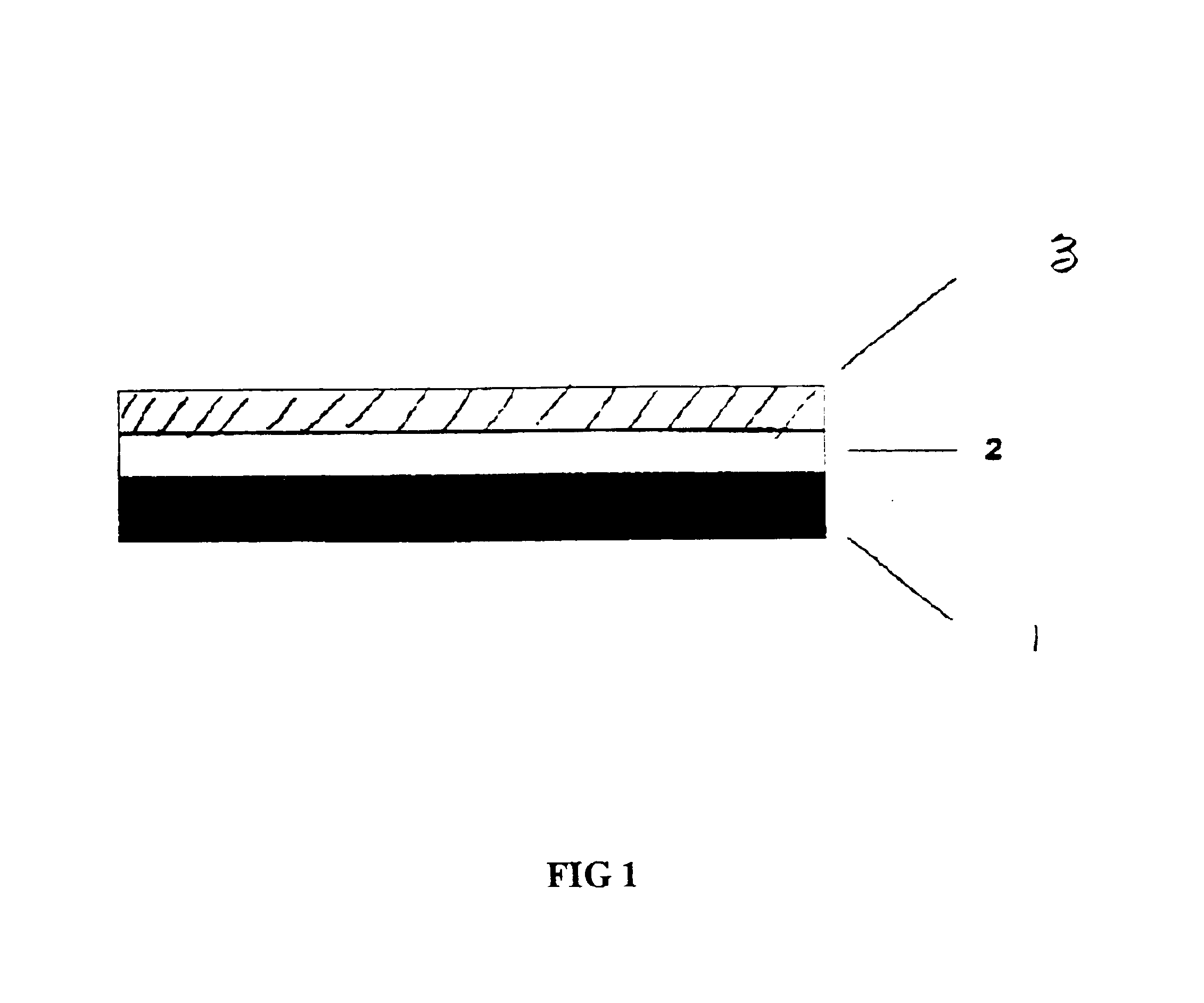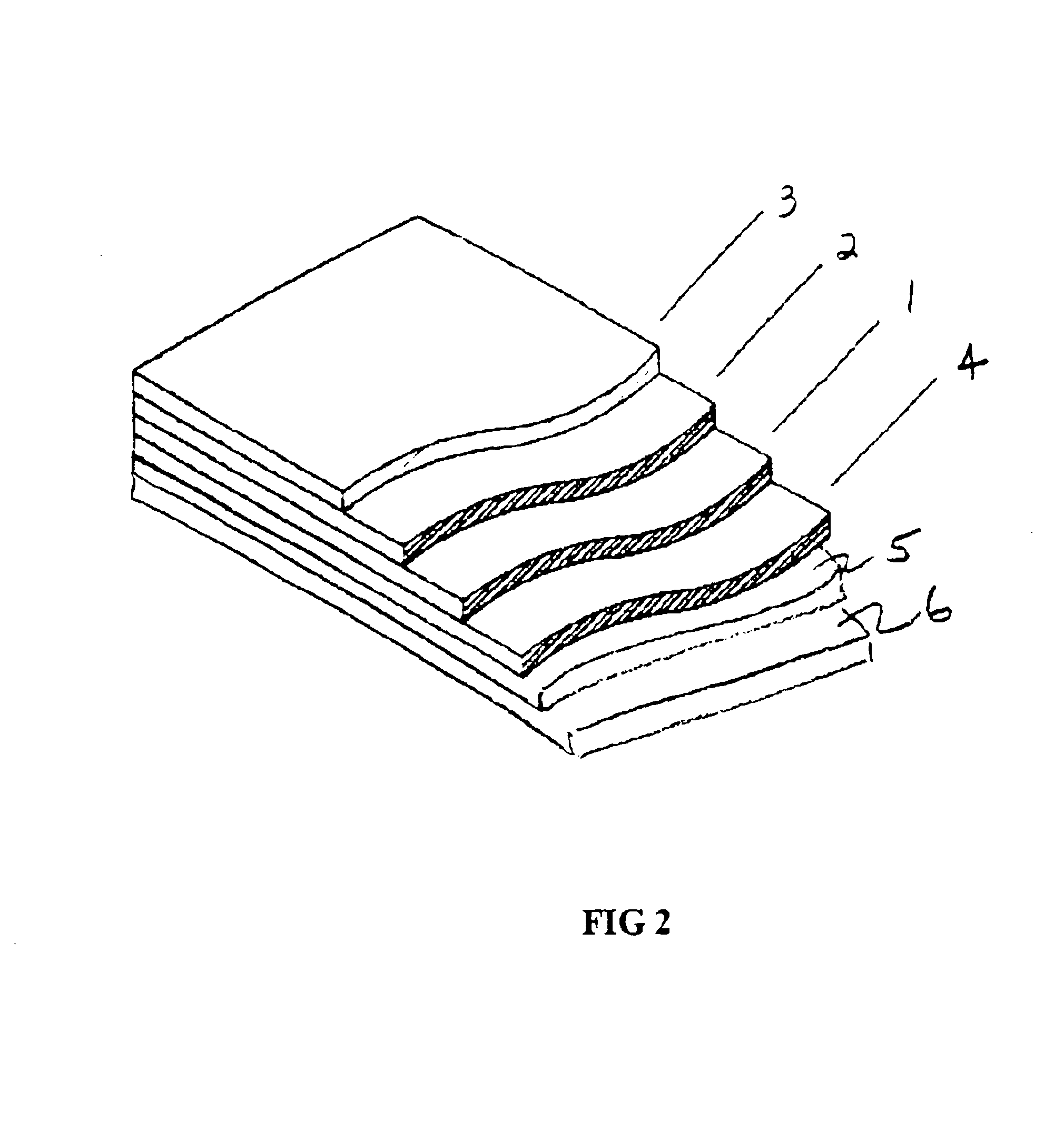Hydrogen gas indicator system
a technology of hydrogen gas and indicator system, which is applied in the direction of chemical indicators, instruments, specific gravity measurement, etc., can solve the problems of hydrogen safety, fire or explosion, and safety concerns that are particularly difficult to overcome, and achieve the effect of simple, low cost, and portableness
- Summary
- Abstract
- Description
- Claims
- Application Information
AI Technical Summary
Benefits of technology
Problems solved by technology
Method used
Image
Examples
Embodiment Construction
[0028]The invention involves devices, methods, and compositions involving hydrogen gas sensors that can provide discrete indicia of the presence of hydrogen gas separate from any change in the physical properties of the hydrogen gas sensor material itself.
[0029]Now referring primarily to FIG. 1, certain embodiments of the invention can comprise a hydrogen gas indicator comprising three components. The first component can be a hydrogen gas sensor material (1) of transition metal oxides or oxysalt such as vanadium oxide, tungsten oxide, molybdenum oxide, yttrium oxide, or combinations thereof, as examples. When exposed to atomic hydrogen the metal oxide can be reduced to the corresponding metal. The reduction from the metal oxide to the corresponding metal can be accompanied by a change in electrical conduction, electrical resistivity, electrocapacitance, magneto-resistance, photoconductivity, or optical properties of the hydrogen gas sensor (1). The change in such physical properties...
PUM
| Property | Measurement | Unit |
|---|---|---|
| thickness | aaaaa | aaaaa |
| thickness | aaaaa | aaaaa |
| friable | aaaaa | aaaaa |
Abstract
Description
Claims
Application Information
 Login to View More
Login to View More - R&D
- Intellectual Property
- Life Sciences
- Materials
- Tech Scout
- Unparalleled Data Quality
- Higher Quality Content
- 60% Fewer Hallucinations
Browse by: Latest US Patents, China's latest patents, Technical Efficacy Thesaurus, Application Domain, Technology Topic, Popular Technical Reports.
© 2025 PatSnap. All rights reserved.Legal|Privacy policy|Modern Slavery Act Transparency Statement|Sitemap|About US| Contact US: help@patsnap.com



